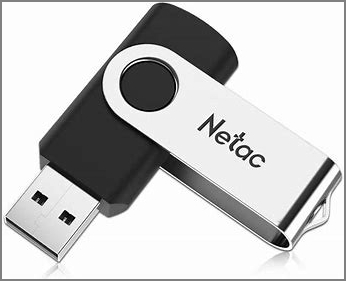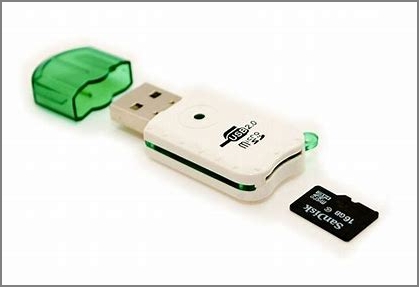Working With Thumb Drive& Get the Difference Between It and a Flash Drive
The Definition of the Thumb Drive
A thumb drive, alias USB flash drive, is a small solid-state drive connecting to a device through a USB port. It is a data storage device that includes flash memory with an integrated USB interface, and you can do storage, back-ups, and transferring of files or data on it.
From Wikipedia
The thumb drives' size and shape may resemble a thumb, and maybe this is the reason where its name came from; some look like small cubes. It is usually only a few centimeters in length and width, and they look very thin and weigh pretty light.
The Features of the Thumb Drive
Because they don't contain any moving parts, thumb drives are more durable than floppy disks or CDs and are smaller, faster, and have a larger capacity.
Its mini-size feature makes it so portable that you can bring it conveniently on the key ring, in your pocket, or everywhere. Most desktops and laptops are equipped with USB ports, making thumb drives convenient and widely used.

The Usage of the Thumb Drive
We summarized the five most frequently used functions of a thumb drive here:
1. To back up important data.
2. To transport and restore personal data.
3. Using as an operating system installation media. Some operating system installers can be stored on a flash drive and reinstalled when needed; this is incredibly convenient for computers that do not have an external optical drive installed.
4. Using as application carriers. The thumb drive stores some applications that run on the computer without installation.
5. For secure storage of data, software, and application files.
I use the first two functions the most; the thumb drive makes it convenient to transfer data between computers, and it's so easy to practice that you'll learn at once, even for your first time using the thumb drive.
How to Use a Thumb Drive on a Computer
Here is an example, if we want to transfer a file using a thumb drive, we need to do the steps below:
1. Find the USB port on your computer's front, back, or side, and insert the thumb drive into the USB port.
2. If you insert the thumb drive for the first time, the computer might pop out an alert window to ask you to install the drivers or not, select the continual option and install the thumb drive on your computer.
3. Open Files Explorer and locate and open the thumb drive on your computer.
4. Find the file you want to move and drag or copy and paste it into your thumb drive.
5. Make sure the files have transferred, then eject the drive(Right-click the drive icon and click Exit).
6. Unplug the drive from your computer.
After that, repeat the same operation on another computer, and copy and paste the files from the thumb drive to the location you want on the computer. And data transfer operation is done.

Supported Operating System for Thumb Drive
It is important to note that the thumb drive uses USB Mass Storage Device Class standards. You can open and use the thumb drive on almost every computer because numerous operating systems, including Windows, Linux, Mac OS, and many BIOS boot ROMs, support this standard.
The Difference Between a Flash Drive and Thumb Drive
A flash drive is a tiny electronic device with flash memory used to transport or save data to or from a computer, digital camera, and other devices. Like thumb drives, flash drives also use USB plugs to connect to computers and other devices and can transfer data and be removable and rewritable.
Many people mistakenly believe that thumb and flash drives have no differences because they serve similar functions. But they are not the same thing. Let's see the list below for an illustration:
Generally, a thumb drive is used to transfer data between different computers. The operation of a thumb drive takes longer than a flash drive, and it has relatively less storage than a flash drive
| Comparison | Thumb Drive | Flash Drive |
|---|---|---|
| Meaning |
Thumb drives serve as a typical portable USB storage device |
The Flash drive stores and retrieve data from its flash memory |
| Storage Types | Thumb drives are Solid State Drives (SSD). Without magnetic storage, Solid State Drives use flash memory to transfer data | Flash drives are compact flash (CF), a high-speed device with magnetic properties to store data with flash memory |
| Applications | Generally, a thumb drive is used to transfer data between different computers. The operation of a thumb drive takes longer than a flash drive and it has relatively less storage than a flash drive | It is utilized for large-capacity files because it offers a quicker access time and larger storage capacity. Flash drives can be found in smartphones, tablets, and other electronic devices |
| Durability | The majority of thumb drives are fragile and readily breakable | Flash drives are durable and resistant to many accidents. And flash drives store data longer than thumb drives |
Hong Long Do Thumb Drive Last
A thumb drive's lifespan usually lasts ten years, but if you take some preventive measures and daily care for it, its lifespan can be prolonged, and you can use it longer.
How to Prolong the Life of a Thumb Drive
Here are some tips:
1. Make sure to cover the thumb drive when not in use to avoid dirt and other contamination from accumulating on the contacts.
2. Keep your thumb drive away from hostile environments like those with high humidity or temperatures.
3. Never remove a thumb drive from a USB port while still active. Additionally, "Eject" the drive before taking it out of your computer.
4. Don't keep it connected to the computer idle for too long. Unplug it from your PC when not in use.
5. Frequent device use may reduce its overall lifespan, so using them sparingly or periodically is a good idea.
Related Articles
- What Is The Root Directory and What Are The Folders in The Root Directory Used for
- What Is The Difference between Windows 10 Pro and Windows 10 Pro N
- What Is A LUN? Logical Unit Number Explained
- Discord Hardware Acceleration: Everything You Need to Know